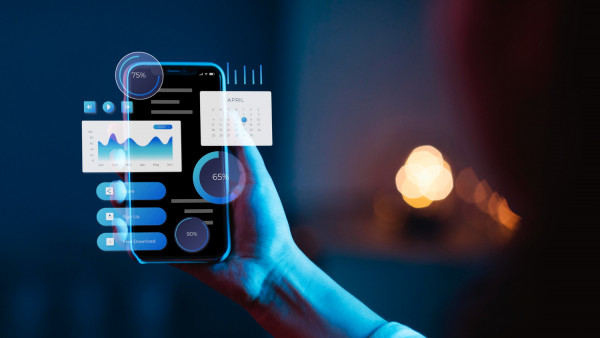Introduction
The demand for low-power embedded devices has surged across various applications, including IoT, wearables, and battery-powered devices. As these devices become more common, it’s important to find ways to manage their power usage better because of limited battery life and environmental issues.
Understanding Power Consumption in Embedded Devices
Power consumption in embedded devices refers to the amount of electrical energy required for the device to perform its intended functions. It is essential to have a clear understanding of power consumption in order to optimize energy usage and extend battery life.
The Concept of Power Budget and Management
Power budget plays a crucial role in managing power usage within embedded devices. It involves allocating a specific amount of power to different components to ensure overall efficiency. Understanding the power budget allows for optimal allocation and management of power resources.
The Contribution of Components to System Power Consumption
Different components within an embedded device contribute differently to the overall power consumption. For example, the processor, display, sensors, and wireless modules may consume varying amounts of power. By identifying the components that consume the most power, developers can focus on optimizing their energy usage.
6 Innovative Ways to Reduce Power Consumption in Embedded Devices
1. Optimize Software Algorithms
Optimizing software algorithms is a crucial step in reducing power consumption in embedded devices. By carefully analyzing and refining algorithms, developers can identify areas of inefficiency and make necessary adjustments to improve energy efficiency.
Key considerations for optimizing software algorithms include:
- Reducing unnecessary computations: Eliminating redundant calculations and optimizing loops can significantly reduce power consumption.
- Implementing efficient data structures: Choosing the right data structures can minimize memory usage and improve overall performance.
- Utilizing hardware accelerators: Leveraging specialized hardware accelerators or coprocessors for computationally intensive tasks can offload the main processor, resulting in reduced power consumption.
2. Low-Power Components and Hardware Design
Selecting low-power components and implementing efficient hardware design techniques are essential for minimizing power consumption in embedded devices. Here are some strategies to consider:
- Low-power microcontrollers: Choosing microcontrollers specifically designed for low-power operation can greatly contribute to energy efficiency.
- Power-aware circuit design: Implementing techniques like clock gating, power gating, and voltage scaling at the circuit level can significantly reduce power consumption during idle or low activity periods.
- Energy-efficient peripherals: Opting for peripherals that have low-power modes or intelligent power management features can further enhance overall energy efficiency.
3. Dynamic Voltage and Frequency Scaling (DVFS)
Dynamic voltage and frequency scaling (DVFS) is a technique that allows embedded devices to adjust their operating voltage and clock frequency according to the workload. By dynamically scaling these parameters, devices can optimize power consumption while maintaining performance requirements.
Benefits of DVFS include:
- Fine-grained power management: DVFS enables devices to operate at lower voltages and frequencies during periods of low activity, leading to significant energy savings.
- Thermal management: By reducing the voltage and frequency during high-temperature conditions, devices can prevent overheating and ensure reliable operation.
- Performance-efficiency tradeoff: DVFS allows for a balance between performance and power consumption, ensuring optimal efficiency based on workload demands.
4. Energy Harvesting Techniques
Energy harvesting techniques involve capturing and utilizing ambient energy sources, such as solar, thermal, or kinetic energy, to power embedded devices. These techniques can reduce the reliance on traditional power sources and prolong battery life.
Some energy harvesting techniques include:
- Solar panels: Converting sunlight into electrical energy can provide a sustainable power source for embedded devices in outdoor or well-lit environments.
- Piezoelectric materials: These materials generate electricity when subjected to mechanical stress or vibration, making them suitable for applications that involve motion or vibrations.
- Thermoelectric generators: By harnessing temperature differences, thermoelectric generators can convert heat into usable electrical energy.
5. Power Management Strategies
Implementing effective power management strategies is crucial for optimizing energy efficiency in embedded devices. Some commonly used strategies include:
- Sleep modes: Putting the device into sleep mode during idle periods can significantly reduce power consumption while maintaining the ability to quickly resume normal operation.
- Power gating: Completely shutting down power to unused components or subsystems can minimize standby power consumption.
- Clock gating: Disabling clock signals to inactive components can eliminate unnecessary power usage.
- Adaptive clocking: Adjusting the clock frequency dynamically based on workload requirements can optimize power consumption.
6. Machine Learning and Predictive Analytics
Harnessing machine learning algorithms and predictive analytics can help optimize power consumption in embedded devices. By analyzing historical data and real-time inputs, these techniques enable devices to make intelligent decisions regarding power management. Some common applications of machine learning and predictive analytics in this context include:
- Dynamic power allocation: By predicting future workloads and power requirements, embedded devices can allocate power resources accordingly, maximizing efficiency.
- Fault detection and prevention: Machine learning algorithms can identify patterns in sensor data that may indicate potential faults or inefficiencies, allowing for proactive maintenance and energy conservation.
- User behavior analysis: By analyzing user patterns and preferences, embedded devices can adapt their power consumption to meet specific needs, reducing waste.
Conclusion
Reducing power consumption in embedded devices is a multifaceted task that requires a combination of hardware design choices, software optimizations, and efficient use of available resources. By partnering with STL Digital, you can leverage our expertise in optimizing embedded device power consumption. We offer tailored solutions for hardware and software integration that address specific needs in product development. With our support, you can create energy-efficient solutions that meet your requirements while minimizing environmental impact.
Remember: Every small improvement in power consumption can have a significant impact on the overall efficiency and sustainability of embedded devices. Let us help you in your journey towards creating more energy-efficient solutions.
Explore our Embedded Engineering Solution here.



